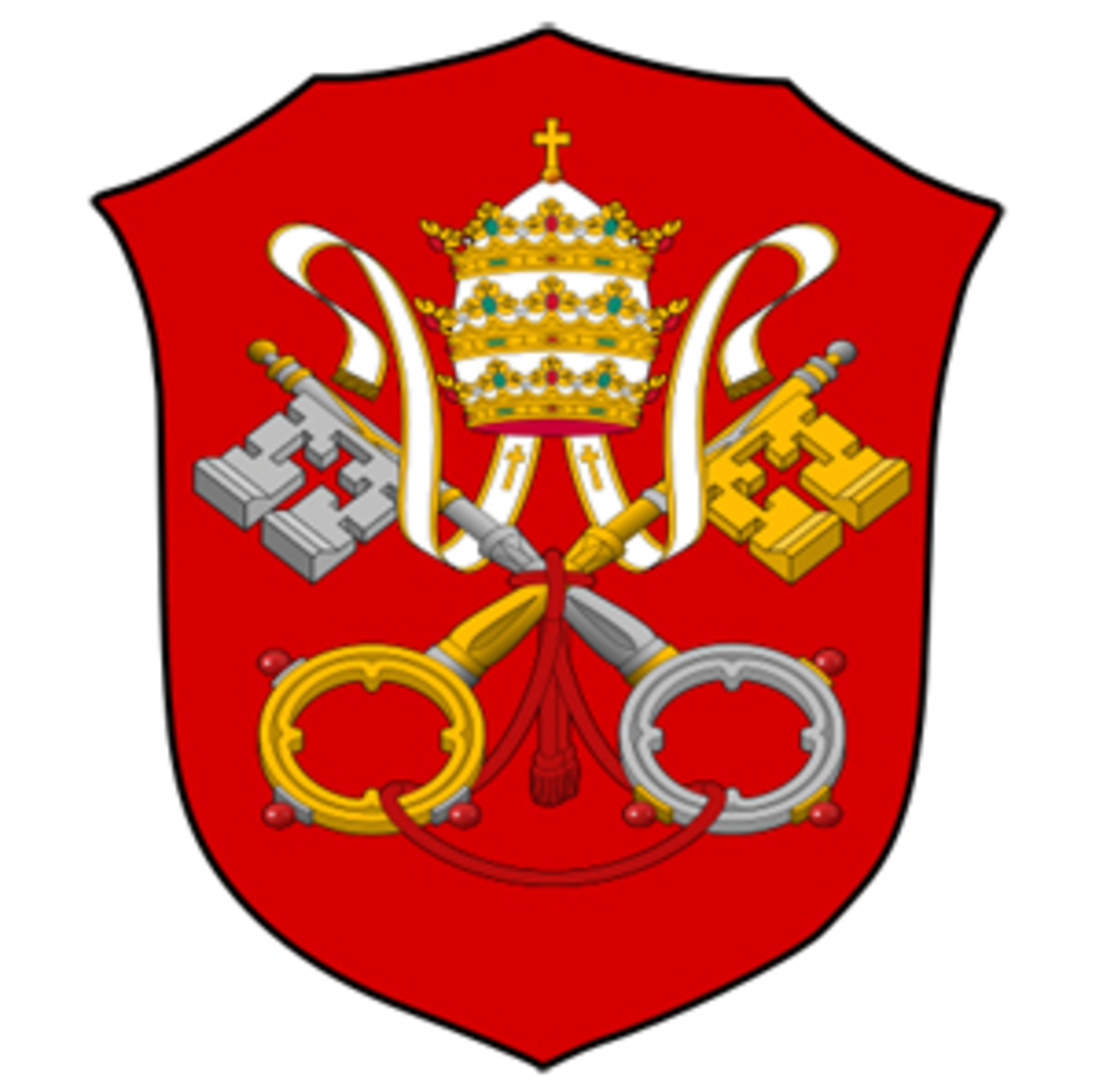The Papal States
The Papal State was constituted a theocratic monarchy led by the Roman pope, which controlled the Western Church. The territory of the Papal State itself represented a true no-man’s, or rather every-man’s, land, and authentic mosaic of city-states, signorias, hill communities, or religious orders.

Coat of arms

Shirt
| Position | First name | Last name | Mjesto rođenja | Like | Dislike | |
|---|---|---|---|---|---|---|
| GK | Mattia | PERIN | Latina |
7 |
0 |
|
| GK | Mirko | PIGLIACELLI | Rome |
1 |
3 |
|
| DC | Andrea | RANOCCHIA | Assisi |
0 |
1 |
|
| DC | Angelo | OGBONNA | Cassino |
4 |
2 |
|
| DC | Filippo | ROMAGNA | Fano |
0 |
0 |
|
| DC | Leandro | BONUCCI | Viterbo |
12 |
3 |
|
| DRC | Luca | CEPPITELLI | Castiglione del Lago |
0 |
0 |
|
| DLC | Alessio | ROMAGNOLI | Anzio |
5 |
1 |
|
| DRL | Alessandro | CRESCENZI | Marino |
1 |
2 |
|
| DRL | Lorenzo | DE SILVESTRI | Rome |
3 |
1 |
|
| DR/MR | Davide | ZAPPACOSTA | Sora |
5 |
1 |
|
| DMC/DC | Daniele | DE ROSSI | Rome |
11 |
1 |
|
| MC | Alessandro | MURGIA | Rome |
3 |
2 |
|
| MC | Andrea | BERTOLACCI | Rome |
2 |
1 |
|
| MC | Danilo | CATALDI | Rome |
1 |
2 |
|
| MC | Lorenzo | PELLEGRINI | Rome |
6 |
1 |
|
| MC | Stefano | SENSI | Urbino |
1 |
0 |
|
| MC | Valerio | VERRE | Rome |
1 |
2 |
|
| MRC/DR | Alessandro | FLORENZI | Rome |
7 |
1 |
|
| ML/DL | Leonardo | SPINAZZOLA | Foligno |
1 |
1 |
|
| AMRLC | Giacomo | BONAVENTURA | San Severino Marche |
0 |
2 |
|
| AMRLC | Ricardo | ORSOLINI | Ascoli Piceno |
0 |
0 |
|
| AMRL | Amato | CICIRETTI | Rome |
0 |
2 |
|
| AMRL | Antonio | CANDREVA | Rome |
1 |
3 |
|
| AMRL | Federico | RICCI | Rome |
0 |
2 |
|
| AMRL/SS | Matteo | POLITANO | Rome |
1 |
1 |
|
| FRLC | Alessio | CERCI | Velletri |
3 |
1 |
|
| FRLC | Diego | FALCINELLI | Marsciano |
0 |
0 |
|
| FRLC | Gianluca | CAPRARI | Rome |
1 |
1 |
|
| FC | Federico | MELCHIORRI | Treia |
0 |
0 |
|
| FC | Mattia | DESTRO | Ascoli Piceno |
0 |
0 |
|
| FC | Stefano | OKAKA | Castiglione del Lago |
0 |
0 |
|
| FC/SS | Simone | PALOMBI | Tivoli |
0 |
3 |
(Today part of: regions Lazio, Umbria and Marche in Italiy)
In the conflicts with the emperors, sometimes it would exist only theoretically, but with the emergence of numerous Christian heretic movements (Gre. hairesis – “choice”) in the first half of the 13th century it had completely disappeared at times. The Cathars, who were especially widespread, managed to form a parallel Church, with its own bishops, territorial organization, and Councils, and as such it rivaled the one in Rome. Aware of the denial of their ideological roles, the pope and the Church took a hard line, establishing the Inquisition – the Church Court – with the exclusive role of eradicating the beliefs and rites that opposed faith and the discipline of the Catholic Church. With the goal of a “true spreading of the faith” the Inquisitors killed, tortured, imprisoned and persecuted the heretics, but “witches,” Jews, and scholars as well, banning their teachings if their views questioned the validity of the Bible’s outlook on the world.
In mid-13th century its territorial expansion turned towards the central parts of the Peninsula and the Adriatic coast. Rome was controlled by powerful houses and feudal parties whose troupes ruled the city streets at their own will, and more than once forced the pope to leave the city. Consequently, for example, the pope spent almost the whole of the 14th century in Avignon in Provence, where he fell under the influence of French kings, leading to double elections of the popes.
Sources
- Grupa autora, Povijest: Razvijeni srednji vijek , knjiga VII., Zagreb 2008.
- Michael JORDAN, U ime Božje : nasilje i razaranje u svjetskim religijama, Zagreb 2008.
- Jacques LE GOFF, Civilizacija srednjovjekovnog Zapada, Zagreb 1998.
- Giuliano PROCACCI, Povijest Talijana, Zagreb, 1996.
- ''Inkvizicija'', (http://www.enciklopedija.hr/Natuknica.aspx?ID=27486)
- Antun NEKIĆ, ''Vjerske predodžbe u razvijenom srednjem vijeku'', (http://povijest.net/vjerske-predodzbe-u-razvijenom-srednjem-vijeku/)
- The Inquisition, Dokumentarni film, redatelj: Bruce Burgess, Viasat History, 2014.
